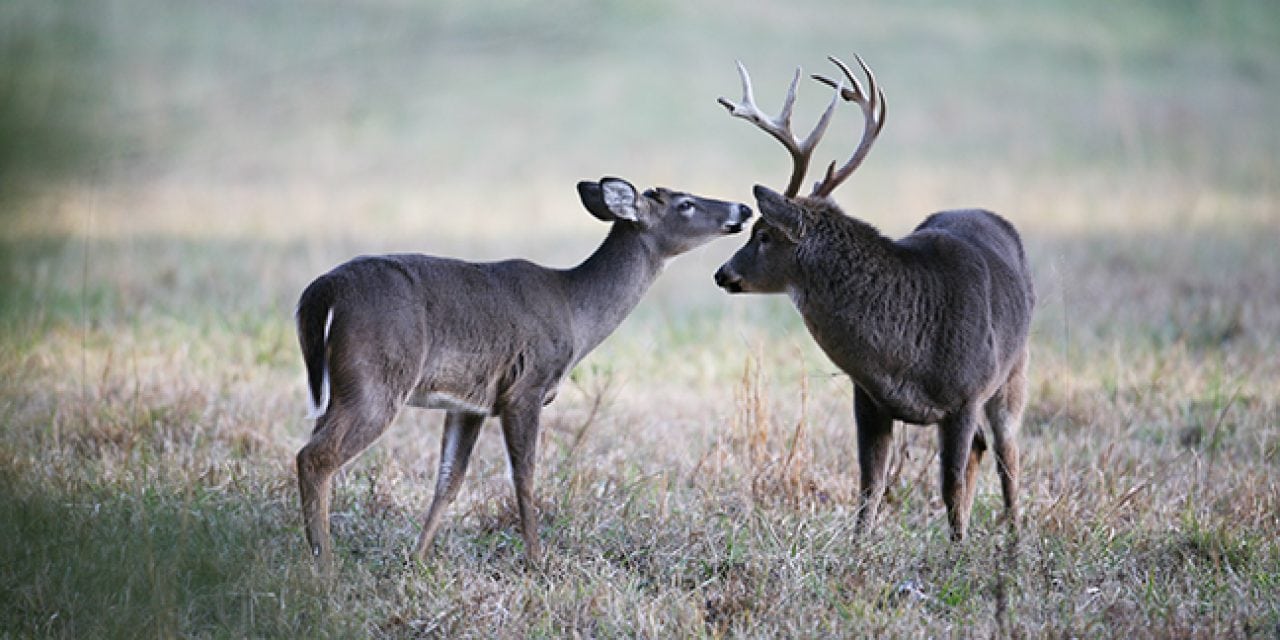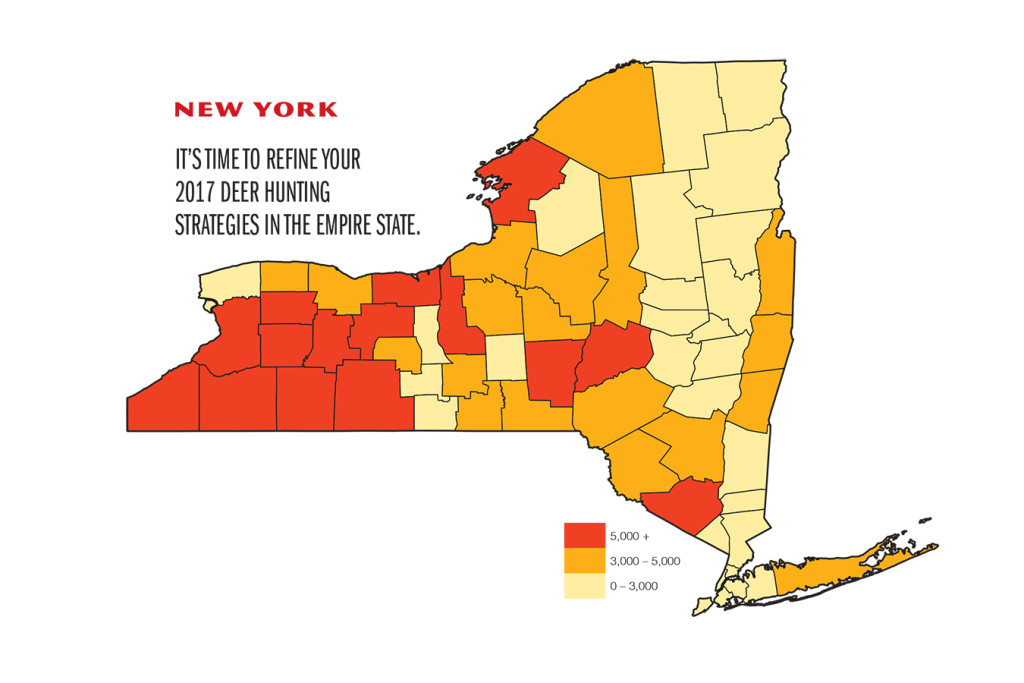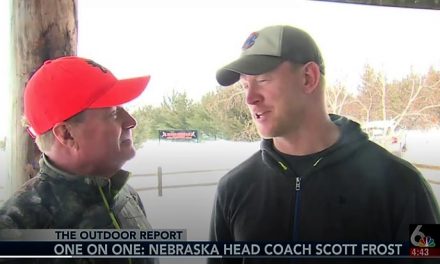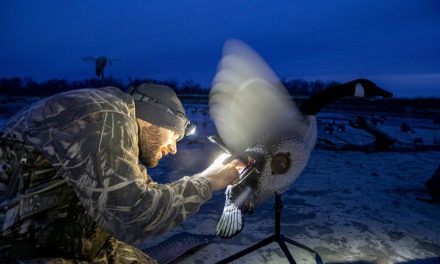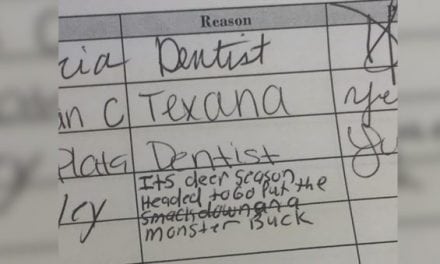When it comes to deer hunting in New York things only seem to get better every year. Hunters posted a modest but significant 5 percent increase in the total harvest over 2015 and crossbow hunters posted a phenomenal 26 percent increase in statewide harvest over the previous year.
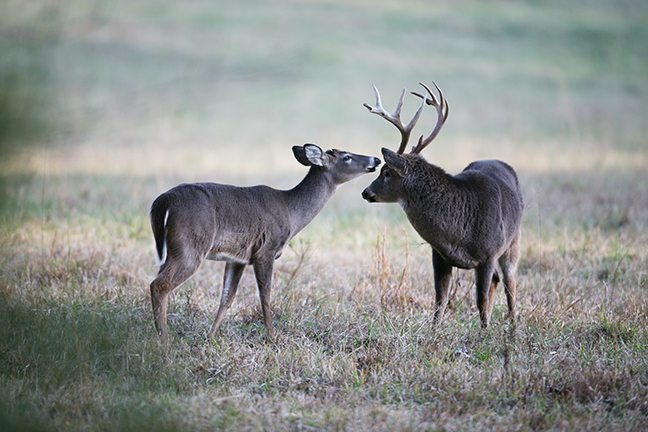
Photo By Ron Sinfelt
For most hunters the focus is on bucks, and in recent years the trend has been to focus on bigger bucks. In fact, according to the New York Department of Environmental Conservation’s deer section biologists, the harvest of young bucks has dropped nearly 70 percent over the last decade. Every year, tens of thousands of New York hunters enjoy the opportunity to bring home a handsome 2.5-year-old or older buck. Still, about half of the antlered bucks taken in New York are only 1.5 years of age (yearlings). Yearling bucks generally weigh about 20 percent less and have 50 percent smaller antlers than they would as a 2.5-year-old.
The primary reason New York doesn’t have more older, larger-antlered bucks in the harvest is because many get taken as yearlings. But the good news is that this is completely within the power of New York hunters to change simply by choosing to pass up shots at young bucks.
For New York’s bucks to get bigger bodies and larger antlers, they simply need to get older. Older bucks are not only more challenging to hunt but yield more meat for the successful hunter. These bucks create more rubs and scrapes and vocalize more, elements that add to the hunting experience.
In fact, many New York hunters are already choosing to pass up young bucks. In 2015, about 48 percent of the adult bucks harvested in the state (excluding areas with antler restrictions) were 2.5 years old or older. As more hunters choose to pass on young bucks, all hunters will enjoy the opportunity to see and take older bucks.
However, not all of New York’s deer hunters are interested in or focus solely on big bucks. In fact, the numbers clearly show that hunters are split nearly evenly on their preferences. Some 107,006 adult bucks were taken statewide last year, a tremendous number by any other state’s standards, but nearly as many (106,055) of the deer shot in New York were antlerless.
The any-deer trend holds true for rifle hunters, bowhunters and muzzleloader hunters statewide.
The highest harvests regardless of method or sex occur in the western portion of the state. It makes sense that more deer are taken in areas of mixed forest, upland cover and agricultural lands because these habitats historically contain the most deer. Substantially fewer deer are taken in the heavily wooded, mountainous Adirondacks and Catskills, where hunters are more likely to be focused on a “wilderness” hunt or want to take their chances on finding a trophy-sized buck in regions where they know the animals have time to grow bigger bodies and antlers.
One significant change in New York deer hunting last year occurred during the crossbow season, when 26 percent more hunters participated over 2015. Long a contentious issue among New York’s contingent of deer hunters, crossbows have proven to be both popular and effective for deer and interest in the sport is expected to continue to grow annually.
New York’s Deer Management Permit (antlerless) program generated 588,430 applicants last year, a minimal 6 percent decline from 2015. Some 14 percent of DMAP permit holders were successful last year, slightly higher than in 2015, when 12.3 percent of DMAP permittees tagged their deer.
There was good news among bowhunters in 2016, when nearly 42 percent of archers filled their tags. This is a hefty increase over the 31 percent of bowhunters who were successful in 2015.
Perhaps most telling about New York’s deer hunters is a recent report that asked sportsmen what their goals were during deer season. According to the report, hunters statewide said that the “opportunity to take at least one deer” was ranked as the most important dimension of hunter satisfaction. The opportunity to take a big-antlered buck and the opportunity to take any buck one chooses were ranked statistically equal at second in importance. Other hunting satisfactions (i.e., a composite of overall hunting opportunity and complexity of regulations) ranked last in importance to respondents.
Fortunately for these hunters, New York’s annual harvest statistics show a remarkable consistency from year to year, which means hunters who remain focused on their goals (to take a buck or “any deer”) should be able to find a place where their preferences can be met.
For example, if high-odds hunting is of interest, it makes sense to focus on Steuben County, which consistently leads the state in total deer harvests year after year, decade after decade. There is, unfortunately, little public land in the county, which means hunters will have to know someone or seek permission to hunt on private lands. There are two ways to look at the private-land equation: Some landowners won’t let anyone new in but some will permit access to hunters who know how to approach, talk to and treat property owners honestly. Get one foot in the door and in most cases landowners will welcome you back year after year — it all depends on how the hunter presents himself and respects fences, gates, livestock and buildings.
For the most part New York’s best deer hunting (for “one deer” hunters) is in the aforementioned western region, essentially regions 7, 8 and 9. Steuben County is the exception in that it contains very little public land, but other counties within the western region offer plenty of public hunting opportunities with, in some cases, thousands of acres of easy-access public lands that are open to hunting throughout the season.
Regions 3, 4 and 5 also have pockets of excellent deer habitat and additional opportunities for hunting on public lands ranging from state parks, state forests, wildlife management areas and other areas that are open to hunting with various restrictions.
All of these regions have good-to-excellent numbers of deer, which is good news for the “one deer” hunter. There have been very few variations in population trends, harvest numbers or buck-doe ratios in recent history, which means experienced hunters who wish to target a new area should be able to find deer no matter where they choose to hunt on public land.
In the Adirondacks and the far northern reaches of the state deer numbers are considerably lower due to habitat conditions and winter severity, but even there hunters who are willing to put in their time will find that “one deer” they are looking for. The northern portion of the state is well known for its legendary big bucks but don’t expect to find one behind every tree.
Successful deer hunting requires planning, forethought and strategies that take into consideration existing deer population numbers, habitat conditions, weather and seasonal shifts (pre-rut, rut, post-rut, etc.). For detailed information about deer hunting in New York, log onto www.dec.ny.gov and follow the links to the DEC’s deer harvest reports, where a wealth of regional and district maps, statistics, lists, trends and analysis may be found.
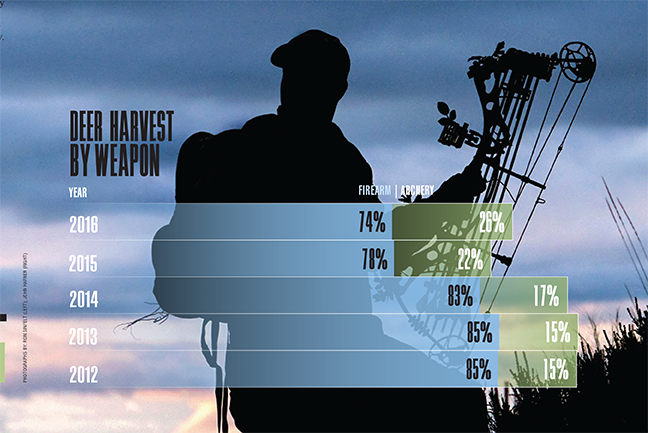
CROSSBOWS ON THE RISE
Crossbows have been a topic of controversy in New York for decades, with both sides adamantly defending their positions. At one point there was an anti-crossbow organization in New York that fought for a ban on crossbow hunting for several years.
Crossbows recently were approved for deer hunting statewide and the response has been phenomenal. In 2015 the increase in crossbow hunters was 35 percent and that number is expected to continue to grow. A total of 7,469 deer were taken by horizontal bowhunters in 2015. In 2016 there were 9,439 deer taken with crossbows, a jump of over 26 percent.
Crossbows are especially popular among women, children and older hunters with medical issues, handicaps or disabilities that preclude them from using recurve or compound bows. Although crossbows provide hunters with only one shot, they may be pre-loaded and are designed to be fired from the shoulder using specially designed scopes that are generally calibrated from 10 to 50 yards to ensure accurate shooting. Also, crossbows are relatively light in weight and are easy to maneuver inside a blind or in a tree stand. Some crossbows are lightweight and of compact design so that they may be used while stalking or still-hunting.
To find out more about New York’s crossbow hunting regulations, restrictions and licensing, log onto www.dec.ny.gov.
The post 2017 New York Deer Forecast appeared first on Game & Fish.

